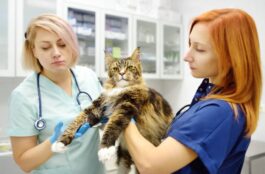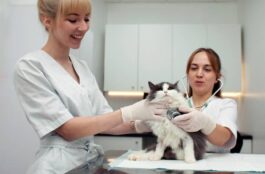
Like human beings, cats and dogs can suffer from oral issues such as bad breath, tartar accumulation, gum disease, tooth decay, and broken teeth. It can result in a more severe problem and even require surgery if not addressed as soon as possible. Unfortunately, your pet can’t inform you when they struggle with dental pain. It’s often up to you, the pet parent, to identify and treat any possible complications they may have with their teeth.
What Are the Signs of Pet Dental Problems?
Because your cat or dog can’t tell you there’s something not right, here are signs that inform you they may have oral issues:
- Bad breath. While it’s normal for pets to have some smell in their mouth due to eating, foul breath can indicate gum disease or another oral problem.
- Excessive drooling. If your pet unexpectedly drools more than usual, it might indicate something is wrong with their teeth or gums.
- Change in eating habits. If your pet stops eating and you notice difficulty chewing, this could indicate oral pain.
- Visible tartar build-up or discolored teeth. If your pet’s teeth are yellow, brown, or covered in plaque, this could indicate periodontal disease or another more severe issue and should be addressed immediately.
- Pawing at the mouth or face rubbing. If your pet is unusually pawing at their mouth or face rubbing, it could be a sign of pain in their teeth and gums.
On the other hand, consult your vet regarding the best dental and preventative care routines to implement during your kitten and puppy checkup.
How to Prevent Dental Problems in Pets
To help keep your pet’s teeth healthy and free of problems, below are some tips:
Brush Your Pet’s Teeth Regularly
Brushing your animal companion’s teeth is one of the most effective methods to prevent dental disease. Do this at least twice or thrice a week using a pet-safe toothbrush and toothpaste. If it’s your first time to do this, acclimate your pet to the brushing with these recommendations:
- Situate your pet in a comfortable position.
- Massage your pet’s gums, lips, and teeth with your finger in slow-moving, circular motions for up to 1 minute once or twice a day. They may need a few weeks to get used to this.
- Introduce the toothpaste by putting a pea-sized amount on your fingers and allowing your pet to taste it, then immediately rewarding them with a treat. In the next few days, raise the amount of time between toothpaste tasting and providing rewards.
- Introduce the toothbrush by adding a small amount of toothpaste to the toothbrush. Allow your pet to lick the toothbrush and immediately reward them. Do this for several days, increasing the time between licking and rewards.
- Once your pet has gotten used to it, do the actual brushing in slow, circular movements.
Visit the Vet Regularly
Routine visits to the North Providence veterinary clinic ensure that your pet’s teeth remain in good condition. A qualified veterinarian can clean your pet’s teeth and check for any early indications of dental disease. This allows them to address problems promptly and raises the chances of effective treatment.
Choose the Right Diet
It’s important to decide on food specifically formulated to maintain your cat or dog oral health and feed treats that promote dental health, such as chews, rawhide pieces, and crunchy bones. Dogs can benefit more from a raw diet rich in meat and veggies with little to no starch content.
On the other hand, cats need a diet rich in proteins and minerals. Keep in mind that no single diet is right for all pets. Consult your veterinarian for advice on what diet program would suit their needs.
Provide Toys That Can Help Clean Teeth
You can give your pet toys that help clean their teeth while they play. These usually come in the form of rope toys, chew sticks, or rubber balls with bristles or nubs, which are designed to separate plaque as they gnaw on it.
Keep Your Pet Hydrated
Your pet needs lots of fresh water daily to stay hydrated and healthy. This helps flush out bacteria in their mouth and prevent oral issues from developing. Change your pet’s water consistently and provide an ample daily supply.
In Conclusion
Caring for your pet’s teeth is essential in maintaining their overall health. Following the suggestions above and routine veterinarian visits can help ensure your animal companion stays healthy and happy for years. Narrow your list and ask for recommendations from friends and family. This helps you make an informed decision about the best treatment options for your pet.


